|
 |
|
 |
|
 |
 |
| |
16:9 in English: What is Modern Cinema?
Af ADRIAN MARTIN
This is the introductory chapter, previously unpublished in English, to my 2008 book What is Modern Cinema?, a collection of essays published in Chile by Uqbar as ¿Que es el cine moderno?. My thanks to Ascanio Cavallo, Gonzalo Maza, the editors of La Fuga, the staff of Uqbar, and the great team at the Valdivia Film Festival – especially the late and much lamented Guido Mutís – who collectively made this adventure possible.
There was a lot of post-war energy about it. A lot of the feeling, both in live TV and those early films, was: “You ain’t gonna tell me how to do this, no way. I’m going my way. I survived the war, I’ll do it my way”. We knew that they were going to come up with the conventional, and we were going to go the other way!
Arthur Penn, 2008 (Beck 2008)
What is modern by virtue of its narrative? I prefer to say its greater freedom.
Jean-Luc Godard, 1965 (Milne 1972, p. 221)
One might say that the critics are almost invariably disconcerted by a new work, and so often they don’t know what to say.
François Truffaut, 1962 (interview reprinted in Sarris 1967, p. 525)
One of the most beautiful pieces of Twentieth Century film criticism is literary theorist Roland Barthes’ tribute to the Italian director Michelangelo Antonioni (1912-2007), composed and delivered in 1979 on the occasion of the city of Bologna’s special lifetime award to the filmmaker (Barthes 1985, p. 43-6). Barthes begins his letter, “Caro Antonioni”, by making a distinction (via Nietzsche) between the figure of the Priest (“we have more than enough of them”) and that of the Artist. “Contrary to the priest”, he writes, “the artist wonders and admires. The gaze of the artist can be critical, but it is not accusing or resentful”. |
|
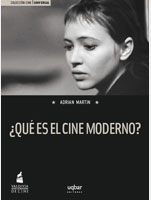
Fig. 1. Anna Karenina on the cover of ¿Que es el cine moderno? (Uqbar 2008). |
|
| |
This may not be so of every artist or filmmaker, but it is certainly true of the artist Antonioni. Barthes alludes to a famous printed dialogue between him and the younger French Nouvelle Vague director Jean-Luc Godard (Sarris 1967, p. 21-32). It was 1964, the year of Antonioni’s film The Red Desert, a crucial work for contemporary cinema in so many respects (fig. 2). His Italian colleague Pier Paolo Pasolini would, two years later, use this film as evidence of the growing trend of a cinema of poetry, in which the disturbed mental state of the story’s central character offered the pretext for a liberated style of cinema. What really mattered here, the content (story and characters) or the form, the play with composition, shape, colour, rhythm, sound? The Red Desert posed this question in a frontal way, since its heroine, Giuliana (Monica Vitti), is lost in a world that is rendered by the filmmaker in palpably artificial, unreal ways: the trees and grass, for example, are painted in striking, unnatural colours. It could be called – in reference back to the German cinema of the 1920s – expressionist, except that Giuliana is not quite a Dr Caligari or a Nosferatu, and the strange new world around her, while it reflects her state of mind, also seems autonomous, detached from her personal subjectivity. Responding to this unusual mutation of expressionism in cinema, Godard the respectful student posed to Antonioni this proposition: “The drama is thus no longer psychological, but plastic” – to which Antonioni the radical master responded: “It’s the same thing”.
For Barthes, this conjunction or fusion of the psychological and the plastic corresponds to Antonioni’s tender, curious feeling for the New World of the mid 1960s in which he finds himself a patient observer:
The apprehension you feel for this era is not that of the historian, the politician or the moralist, but that of the utopian who seeks to perceive the new world in precise detail, because he wants that world and wants to be part of it. Your vigilance as an artist is an amorous vigilance, a vigilance of desire.
Barthes goes further still in this brief but great text:
It is because you are an artist that your work is receptive to the Modern. Many regard the Modern as a battle flag raised against the old world and its compromised values, but in your case it is not the static term of a facile opposition: indeed it is the contrary – the Modern is the active difficulty of following the ravages of Time, not merely at the level of Grand History, but also within that small History by which the existence of each of us is measured. Your work, begun shortly after the war, developed step by step along a double course of vigilance, towards the contemporary world and towards your own self.
So this is how we might proceed in writing the history of modern cinema, and defining its main lines of aesthetic and intellectual inquiry: as this “active difficulty in following the ravages of Time” – ravages marked on the world at large by the two World Wars; and on those individuals who, in one way or another, strive to define their identities in relation to the changing times and sensibilities. As Barthes again says of Antonioni: “Each of your films has been, at the personal level, an historical experience: the relinquishing of an old problem and the formulation of a new question”.
Beachhead and heir
But let us take now take a few steps backward. In a sense, the cinema has always been Modern – a “battle flag raised against the old world”. Child of the Twentieth Century, it is both the beachhead of industrial communications technology, and the heir to a particular strain of Romanticism in art and thought. This turned out to be a potent combination: as a mass produced medium, the cinema represented the new Machine Age, with all its belief in progress and efficiency in manufacture; and as a popular culture, it tapped into the humour, energy, rhythm and vitality of low class entertainments, from the circus to the comic strip, via all the forms of boulevard theatre and the music of Tin Pan Alley. On top of that, cinema came to fulfil Wagner’s operatic dream of the Gesamtkunstwerk or total work of art: it gobbled up every preceding art form and mashed them into one super-expressive vessel, equally psychological and plastic. |
|
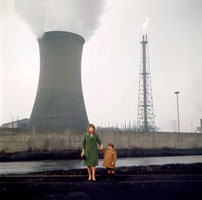
Fig. 2. Il deserto rosso (1964). |
|
| |
What this means is that, from the start, cinema is – as Samuel Fuller immortally said in Godard’s Pierrot le fou (1965) – all about emotion. Not just the familiar, novelistic emotions of stories and their characters, but the unique emotions generated by the cinematic medium (or the cinematograph, as the French called it): speed, delirium, sensations of every kind that arise from the interplay of movement and stillness, or (later in its history) silence and sound.
Whether it called itself Expressionist (as in Germany) or Impressionist (as in France), cinema was always about wrenching the emotion from its traditional vessel of story and projecting it large, spraying it all over the four-edged screen: vast landscapes and tiny raindrops alike trembled; faces and bodies were dissolved in the worlds they beheld and through which they moved; trains or animals, darting about in the frame, diverted our attention from the linear plot line. This is what the philosopher Jacques Rancière has described as the range of emotions – human and non-human, beyond the human, post-human – associated with the aesthetic age to which the cinema corresponds (Rancière 2006). And virtually all the most exciting early theorists of cinema – Vachel Lindsay, Béla Balázs, Jean Epstein – became veritable visionaries in their eagerness to bear witness to these transformations of reality by the cinematic machine.
This tendency – to the excessive, to the abstract, to the purely and irrationally emotional – explains why, even at its most seemingly realistic, cinema seems so fundamentally Surrealistic. Everything seen on the screen, or heard through the screen, is larger and more monumental than itself, more intense, more deliberate, bearing a different kind of gravity: for its moment, each detail seems fantastically impressive and important, and yet that moment is fleeting – the celluloid rolls on through the projector – and hence the detail becomes weightless, a sheer memory. “That unreal real we call film”, said the theorist Raymond Bellour – a photo-chemicallly imprinted reality which is also a mental and sensory hallucination (Bellour 2000).
Into the Straitjacket of Classicism
So film – any film – is an instance or illustration of modernity: that new form of cultural production which brings a new kind of artistic object into the world, and a new type of perception for the viewer who is plunged into an uncannily charged communal darkness. But is every film therefore a deliberate example of artistic modernism? Obviously not; explicit avant-garde movements, however glorious they may be (as in the Soviet experimentation of Sergei Eisenstein and Dziga Vertov, or the Surrealism of Luis Buñuel and Salvador Dalí), have always been marginal in the world’s cinema. Most cinema – certainly most cinema produced for commercial purposes – tends to a certain form of regulated constraint, a kind of discipline, which hauls it back towards classicism: the well-balanced, well-formed film, the well-told story, established rules of professional art-making. |
|

Fig. 3. Samuel Fuller leaning up against the wall in Pierrot le fou (1965). |
|
| |
Cinema was born well after the establishment of the most classical arts: academic painting, the Nineteenth Century novel, the poetic sonnet, the three-act play, verse-and-chorus in song, and so forth. Classicism is all about the invisible style, the form which is so perfectly elegant and unobtrusive that it can go almost unnoticed, if we as viewers are involved enough in the illusion of the full fictional world and its inhabitants, in the narrative content. Where cinema is inescapably modern is in the attention it inevitably compels in us towards form per se in a film, this fusion of the psychological and the plastic: how can we possibly watch a film by Louis Feuillade in the ‘10s, Fritz Lang or Ernst Lubitsch in the ‘20s, King Vidor in the ‘30s or Edgar Neville in the ‘40s, without becoming aware of (and enjoying) the dynamism of the pictorial composition, the pattern of the repeated motifs, the expressive intrusion of sound effects, the alternating rhythmic waves imposed by the editing? (fig. 4)
Nonetheless, powerful social and cultural forces moved the majority of cinema production, over the course of its first four decades, into the straitjacket of classicism: some filmmakers (such as Howard Hawks, or today Clint Eastwood) thrived there, finding artistic invisibility highly congenial to their temperament and sensibility; others simply disappeared into anonymity and mundanity. Classicism became a working norm for most film (and later, television) industries around the world, hence authorising the label, many years after the fact, of ‘classical Hollywood narrative’ – an imprecise term that cannot catch a plethora of exceptional films made at every point of cinema history, but a term that nonetheless validly points to something solid, stolid, often rather dull, that has affected all cinema industries within and beyond America.
In the domain of film theory, the trend to validate classicism became curiously entwined with the attitude of those theorists who drew away from the radical Romanticism of Surrealism and re-investigated, instead, cinema’s basis in the patient, humble recording by the film camera of phenomenal reality: the documentarist John Grierson, the spiritually-inclined André Bazin (author of What is Cinema?), and the materialist philosopher devoted to the redemption of the world’s daily existence, Siegfried Kracauer. It is only today that we are beginning to read these so-called Realists differently, severing them from the conservatism of a certain classical viewpoint that surrounded and cocooned them from other, more tumultuous developments in film aesthetics and thought.
A Real Divide
For so many reasons, the end of World War II marks the undeniable emergence of a real divide between the classical and the modern in cinema. To survive the War as a citizen or soldier – and especially to survive the Holocaust as a Jew – was, as Arthur Penn testifies in the quote at the start of this essay, really a triumph. Moreover, the War had literally left so much of the world (Italy, Germany, Japan, Britain … ) in ruins, devastated; thus, post-War reconstruction signalled much more than a mere clean-up – it was a totally clean slate, a sense of starting from zero on all levels of ethics, morality, social formation, and aesthetics. In this context cinema, too, struggled to arise from the ashes, from the rubble. And modern identities were literally born in this moment, people (like Antonioni) who internalised the destiny of being an artist-citizen of the latter half of the Twentieth Century. Thomas Elsaesser comments, for example, on New German Cinema’s 1970s figurehead Rainer Werner Fassbinder as another instance of someone who internalised in his person and projected outward in his art the “active difficulty in following the ravages of Time”: “In a sense”, writes Elsaesser, “there was nothing more mysterious in Fassbinder’s ‘theoretical’ vantage point on Germany than the fact that May 1945 could be thought of as a tabula rasa, an ‘originary’ moment (May 1945 being the year, as well as the month of his birth) when all the values could be reorganised” (Elsaesser 1996, p. 241).
Thus, after 1945, even the most regulated and conformist modes of film production begin to reflect – often despite themselves – new forms of artistic expression. And then, at last, by 1960, outright modernism moves from the avant-garde margin to the spotlit terrain of an international art cinema circuit, heralded by all the New Wave movements bursting out in France, Italy, Brazil, Japan … |
|
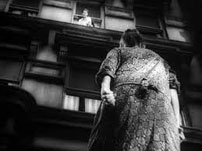
Fig. 4. Dynamic composition in King Vidor’s Street Scene (1932). |
|
| |
Roberto Rossellini is, in this period, one of the first (and still most important) directors who heralded the fact that something radically new and strange, something militantly unfamiliar, had entered the realm of world cinema. But what is most modern about Rossellini, in hindsight, was not perceived so readily at the time, through the mystifying fog of that movement in post-War Italian cinema we know as neo-realism – a movement that stressed naturalness (real locations, non-professional actors, inspiration from newspaper reports) over any kind of artifice. When we today read Bazin and Kracauer on these films, the historic trilogy of Rome Open City (1945), Paisà (1946) and Germany Year Zero (1948) – and if we try to set aside the clichés of historical neo-realism – we see that these critics were grasping for exactly what we respond to, retrospectively, in our time: a new way of filming people and the world they live in, a new way of telling (or refusing to tell) a story (fig. 5). After all, Rossellini quite consciously and literally began from the tabula rasa, the year zero, as the ruins of every kind, the broken links between individuals, families and social institutions (school, hospital, army, prison …) in his films testified.
And there was also something disconcertingly unclassical, or deliberately anti-classical, in the way that Rossellini went about his practice as a filmmaker: here was a cinema of rough edges, of sketches and vignettes, of brutal breaks in rhythm, of odd mixtures or juxtapositions of dramatic and comic tones. A cinema of spontaneity and improvisation (even when that spontaneous effect was carefully contrived) – a cinema of risk, not of the mastery or control that characterised the institution of classical filmmaking. It was this element of chance and risk that led Jacques Rivette in Cahiers du cinéma in 1955 to extol Voyage in Italy (1953) – Rossellini’s move from overtly social-political issues to the domestic, personal sphere – as the “breach that all cinema, on pain of death, must pass through” (Rivette 1955). All proudly, defiantly modern cinema, at any rate.
Films blanc
But what Rossellini was doing in a very concentrated and powerful way in cinema was, in fact, filtering through in many places during the latter half of the ‘40s. In Jean Renoir’s American productions of the period (especially Diary of a Chambermaid and The Woman on the Beach) – as in Otto Preminger’s low-budget thrillers of the time, ultra-atmospheric, melancholic, off-genre films blanc to answer the tidier film noir – a new kind of character psychology began to be sketched. Characters were no longer well-rounded, three-dimensional or internally coherent individuals; rather, they existed in the moment, embodying certain states or emotions, and fluidly changing from one moment to the next. François Truffaut described it well in 1962: “The psychology of the characters no longer interested him. It was … completely poetic instead of psychological” (Sarris 1967, p. 525). And Bazin – speaking in this instance as a critic on the wavelength of the new, rather than the theorist of essential reality – discerned a properly intersubjective mode of psychology, occurring in the spaces between characters, not inside each one: desire, for instance, does not belong to anyone, but moves between bodies like a “mysterious ball of fire”. |
|
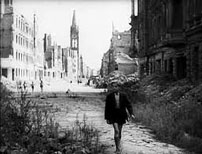
Fig. 5. A new way of filming people and the world they live in: Germany Year Zero (1948). |
|
| |
A new kind of performance
Meanwhile, those home-grown American directors emerging in the post-War period – figures such as Elia Kazan and Nicholas Ray who drew from Lee Strasberg’s post-Stanislavsky Method school of acting – were busy exploring a new kind of performance style to convey these contemporary conceptions of character psychology: busy, fidgety, twitchy, neurotic, full of the surface detail of bodily and facial mannerisms. The Method may have also, in its time, been associated with the code of Realism, but it broke the code of invisibility, of classical proportion and elegance: here, acting was on show, the performer no longer disappeared into or underneath the character (if, indeed, they ever did, or could). Even in the work of directors who began in a more classical period, we see the effect of these changes: George Cukor’s A Star is Born (1954) is an immortal example, showing such veteran stars as Judy Garland and James Mason negotiating new conceptions of screen acting, as the old-fashioned showbiz-genre narrative slowly goes to pieces, overwhelmed by another kind of intensely emotional spectacle (fig. 6).
Such acting necessarily had to impact on, and in fact completely deform, the standard practices of mise en scène or staging for the camera: no longer could actors be trusted to stand stock still for the sake of a neat shot/reverse shot volley, now the bodies got in the way of each other, entwined in unpredictable shapes and configurations which was exactly the revolution (sometimes mistaken for a simple cinéma-vérité rawness) that John Cassavetes later seized, at the end of the 1950s, as the stylistic system at the heart of his films – and, only a few years later, Maurice Pialat in France, beginning with Naked Childhood (1968).
But the nascent modernism of the late ‘40s and early ‘50s did not always mean hysteria, delirium or paroxysm. Even lower-key than Rossellini’s cycle of films with his wife Ingrid Bergman was the work of Yasujiro Ozu, Kenji Mizoguchi and Mikio Naruse in Japan: certainly there were traces of melodrama, and of some popular genres, of historical re-creation, in their films, but above all there was a strikingly contemporary reinvention of the everyday world as represented in cinema: a new attention to the geometry of ordinary spaces, of physical posture and gesture. |
|
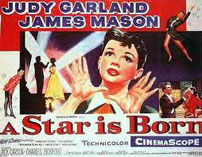
Fig. 6. Judy Garland and James Mason negotiate new conceptions of screen acting in A Star is Born (1954). |
|
| |
Bergmanorama and beyond
Two people who were to become great masters of art cinema also began in this period: Antonioni in Italy, and Ingmar Bergman (1918-2007) in Sweden. As it happened, just days before Bergman’s death on 30 July 2007, I showed his remarkable early work Summer with Monika (1952) – an intensely passionate tale of young love confronted starkly with the melancholy of dreary, duty-bound adult life – to my university students (fig. 7). We read the inspired words of Godard in 1958, and Alain Bergala today, about it – trying to understand its enormous significance for these critics as an eruption of something new, singular and modern in cinema. As Bergala points out, it was filmed (for its central, ecstatic section) on a small island – leading to the exciting breakdown of both studio-shooting rules, and of the tactful barriers between cast and crew (Bergala 2005).
For Godard, something even more fundamental was at stake. In his immortal Cahiers du cinéma text “Bergmanorama”, he wrote: “An Ingmar Bergman film is, if you like, one twenty-fourth of a second metamorphosed and expanded over an hour and a half. It is the world between two blinks of the eyelids, the sadness between two heart-beats, the gaiety between two handclaps.” (Milne 1971, p. 77). In other words, cinema as the conjugation of an eternal present – an especially poignant idea and gesture in the wake of the War’s razing of the past.
Thus, by the end of the ‘50s, all the explorations and experimentations that define modern cinema had been mapped out in embryo: in the refusal of classicism, there were to be new approaches to narrative; to acting and characterisation and therefore to body and gesture; to the depiction of time relations and place or space; and ultimately to representation itself – the act of showing or figuring the world. In the history of modern cinema to follow, some of these items would sometimes be obliterated altogether – no stories, no bodies, no linear time, no discernible real world – but always followed by a new regrouping, a new way to approach perennial questions and problems of cinema. But all under the banner of a certain will to freedom, a liberation from classical constraint.
History marches on: the ‘60s were undoubtedly the great age of modern cinema. From Agnès Varda and Alain Resnais (France) to Jerzy Skolimowski (Poland) and Nagisa Oshima (Japan), from Federico Fellini and Marco Bellocchio (Italy) to Glauber Rocha (Brazil) and André Delvaux (Belgium), from Arthur Penn and Jerry Lewis (USA) to Raúl Ruiz (Chile) and Vera Chytilová (Czechoslovakia), from Peter Whitehead and Ken Loach (UK) to Miklós Jancsó (Hungary), new directors appeared, seemingly every few months from a previously unrecognised or forgotten nation, to sweep away convention and essay bold experiments in film style. In this context, while the great Classicists made their twilight, testament works – Hawks with El Dorado (1967), John Ford with Seven Women (1966) – even Alfred Hitchcock struck out in disconcertingly modern, quasi-Antonioniesque directions with The Birds (1963) and Marnie (1964), while Buñuel reached the apotheosis of his career, reborn in a string of masterpieces including The Exterminating Angel (1962) and Belle de jour (1967). |
|
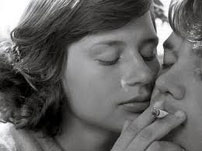
Fig. 7. Summer with Monika (1952). |
|
| |
From minimalism to genre
The ‘70s offered a period of intensification of these gains, less eclectic and glamorous, more focused: from Fassbinder and Wim Wenders in Germany to Monte Hellman and Elaine May in the USA, from Jean Eustache and Philippe Garrel in France to Sohrab Shahid Saless in Iran, from Chantal Akerman in Belgium (fig. 8) and Víctor Erice in Spain to the trans-European express of Jean-Marie Straub and Danièle Huillet, a new spirit of avant-gardism emerged, especially tuned in the direction of minimalism: moving away from the complex, rapid-fire montage of the Soviet ‘20s, Dusan Makavajev in the Yugoslav ‘60s and Chris Marker since the ‘50s, or the mosaic construction in large-scale parts pioneered by Chytilová and later to re-emerge in the ‘90s, modern cinema in the ‘70s discovered its henceforth long-lasting love-affair with long takes, exquisitely stretched-out durations, distant and often static camera positions … And, in a sign of further transformations to come post the ‘70s, Godard boldly reinvented himself not once but twice over: first in the hardcore political essays of his Dziga Vertov Group partnership with Jean-Pierre Gorin (culminating in 1972 with Tout va bien), then in the laboratory-like exploration of new video technology in both television and cinema.
The ‘80s represented an unusual and difficult phase in the adventure of modern cinema. The political radicalism, startling polemics and bold formal experiments of preceding decades had seemingly burnt themselves out – or had perhaps been successfully muffled by market forces all over the globe. In the realms of film criticism and theory, and especially in the burgeoning area of cultural studies, attention turned once more, as it had during the ‘50s, to popular modes and genres: the action film (renewed in Hong Kong), the musical (proudly continued by Bollywood), the teenage comedy (allowing a resurgence in America of what Manny Farber once called termite art, sly and intriguing work achieved, without fanfare, within commercial formulae), and especially horror (the field for a new auteurism, with David Cronenerg, Wes Craven and George A. Romero building a bridge between visceral popular forms and the Bergman-Fellini traditions of art cinema) … All this work (in film as in criticism) effectively constitutes an episode of involution within the history of modernism, rather than a definitive break from it; we can rightly give it the name of the postmodern. But that is a topic for another survey (1).
If there is a single film of the early ‘80s that showed how modern cinema was about to develop in the decades to follow, it is Marker’s Sunless (1982): reflective, beguiling, a kind of literary-cinematic puzzle (whose life-story is it, exactly?), but also an elliptical panorama of political experience lived and witnessed in many places since the ‘50s. Above all, in its uncertain, intriguing status as a new type of practice – the essay-film – it redrew the barriers between documentary and fiction, between objective reportage and imaginative speculation, between analysis and fantasy. Sunless was also prophetic in its early embrace of digital video technology: not just raw recording of reality, but also its visual and aural transformation through the circuitry of a new Surrealist sensibility, and an indication of how images and sounds were to become, in the Twenty-First Century, an ubiquitous lifestyle accessory on our mobile telephones and personalised screens – no longer a mystical world apart, but something as close to us as our skin, a kind of second nature … |
|
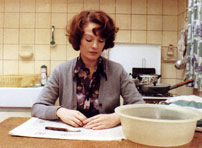
Fig. 8. Tuned in a direction of minimalism: Chantal Akerman’s Jeanne Dielman, 23 Quai du Commerce, 1080 Bruxelles (1975).
(1) For more on this argument, see my “Ruinous Sequels”, Reading Room (New Zealand), no. 3 (March 2009), pp. 49-64. |
|
| |
Although my book What is Modern Cinema? looks at some of the key post-war innovators of modern cinema – Cassavetes, Marker, Godard, Robert Bresson and Roman Polanski – its main focus is on the contemporary innovators that emerge in the 1980s or ‘90s, from Hou Hsiao-hsien and Tsai Ming-liang in Taiwan to Abbas Kiarostami in Iran, from restless global travelers like Akerman and Robert Kramer (both of whom began back in the ‘60s) to defiantly local, even parochial artists like Pedro Costa in Portugal and Naomi Kawase in Japan. Indeed, does it even make sense, anymore, to speak of national cinemas in the case of these filmmakers (the Dardennes in Belgium, Ulrich Seidl in Austria or Mercedes Álvarez in Spain offer other examples) who inhabit a particular region, small town or community, a patch of earth with its own bottomlessly peculiar and rich character? The modern cinema, more than ever, is defined in the tension between a drive towards speedy cosmopolitanism – whether Wong Kar-wai’s stylish border-crossing futuristic fantasy in 2046 (2004) or José Luis Guerín’s smaller-scale poetic flight to Strasbourg in In Sylvia’s City (2007) – and a will to regionalism, a desire to sit in one place and observe how the forces and traces of history sink deep there (fig. 9).
The Adventure of the Modern
In the very latest modern cinema, we see new exchanges – especially between documentary and fiction – which are redrawing the old dividing-lines between the spectacular and the everyday, or the psychological and the plastic. Digital technology has hastened this latest mutation, as has the steady progression of audio-visual work into art galleries and museums (Varda, Costa, Akerman, Erice, Kiarostami, Guerín, Marker, Ruiz – all have taken this step), and also into the on-line world of Internet culture (where David Lynch and others flourish). Even the oft-derided, vast international genre of reality TV is straddling this ambiguous line between the real and the fictive, creating (sometimes inadvertently) new atmospheres and sensations of audiovisuality along the way: in this strange and ever-mutating line, what was pioneered not so long ago by Robert Altman in The Company (2003), Ana Poliak in The Faith of the Volcano (2001) or Michael Rymer in Perfume (2001) today finds its unlikely but pleasurable extension in glossy US TV programs like Laguna Beach or The Hills, consumed by its fans on multi-series DVD box sets.
It is easy, when talking about modern cinema, to become nostalgic, to lament the loss of radicalism of the 1960s and ‘70s – and thus to close the book on the adventure of the Modern. But – to cite one last time Barthes’ “Caro Antonioni” – modern cinema does not end when a certain, shiny, demonstrative period of social Modernity seems to be over; rather, “like a very sensitive instrument”, the Artist “follows the successions of the New that are presented to him by his history; his work is not a fixed reflection … “. And it is the same for the cinema as an art form.
My book What is Modern Cinema?, after a small group of general essays, essentially discusses cinema through its artists, its directors. I do not bother to rehash the ancient arguments devised to convince readers of the existence of the cinema auteur – indeed, I have included some pointed reservations about auteurism, when the sole devotion to auteur films (in the art-cinema or Film Festival circuit) blocks our ability to see anything else going on at the present moment in cinema – but I do adopt the method that French critic-filmmaker Jean-Claude Biette called a poetique des auteurs (rather than the classic ‘50s politique des auteurs or auteur policy) (Biette 1989).
What is this poetics of auteurs? It entails grasping, in an artist’s work, the overall complex or gestalt of style and content, sensibility and poetic gesture – in order, finally, to probe, apply and extend that “very sensitive instrument” formed by a filmmaker’s personal vision of the world, a regard (in the double sense of both a look and an attitude) that is both critical and loving. And it is my hope that writing about film can, in its own way, also carry on the “amorous vigilance” of that double regard which is so unique to cinema. |
|
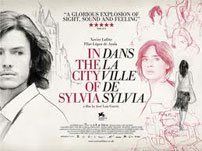
Fig. 9. José Luis Guerín’s In Sylvia’s City (2007). |
|
 |
 |
 |
 |
 |
|
 |
 |
 |
| |
Facts
Literature
Barthes, Roland (1985). “Caro Antonioni”, Art & Text, no. 17 (April 1985), pp. 43-46.
Bellour, Raymond (2000). The Analysis of Film (Bloomington: Indiana University Press).
Beck, Henry Cabot (2008). “Close-Ups on the Outcasts”, True West (May 2008).
Bergala, Alain (2005). Monika de Ingmar Bergman (Belgium: Editions Yellow Now).
Biette, Jean-Claude (1989). Poétique des auteurs (Paris: Cahiers du cinéma).
Elsaesser, Thomas (1996). Fassbinder’s Germany: History Identity Subject (Amsterdam University Press).
Martin, Adrian (2009). “Ruinous Sequels”, Reading Room (New Zealand), no. 3 (March 2009), pp. 49-64.
Milne, Tom, ed. (1972). Godard on Godard (London: Secker & Warburg); interview originally in Cahiers du cinéma, no. 171 (October 1965).
Sarris, Andrew, ed. (1967). Interviews with Film Directors (New York: Avon).
Rancière, Jacques (2006). Film Fables (London: Berg).
Rivette, Jacques (1955). “Lettre sur Rossellini”, Cahiers du cinéma, no. 46 (May 1955).
© Adrian Martin August 2008/May 2010. |
|
|
|
|
 |
 |
 |
 |
16:9 - september 2010 - 8. årgang - nummer 38
Udgives med støtte fra Det Danske Filminstitut samt Kulturministeriets bevilling til almenkulturelle tidsskrifter.
ISSN: 1603-5194. Copyright © 2002-10. Alle rettigheder reserveret. |
11 |
|
|
 |
 |
|
|